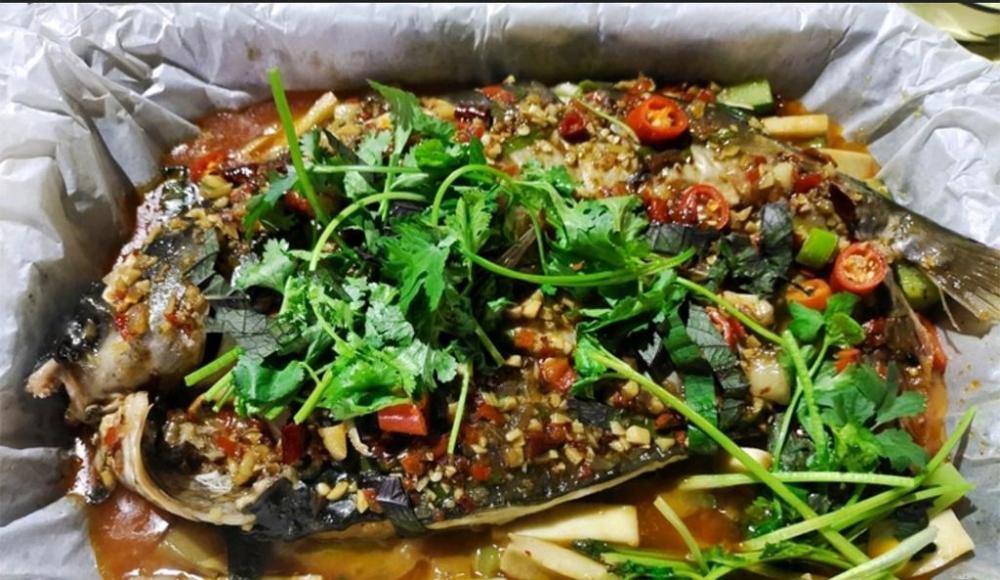49. 梧州纸包鸡 (wú zhōu zhǐ bāo jī)
.jpg.2bcdd231135caba89a1c53387bf79d58.jpg)
Traditional 梧州纸包鸡 (wú zhōu zhǐ bāo jī)
Another speciality of Wuzhou city is actually a Cantonese version of ‘en papillote’, the supposedly-French method of cooking meats or vegetables in a ‘paper’ bag. But with a difference.
There are records of the technique being used at least 2,200 year ago as a tribute to the emperors’ court. In 203 BC, the state of Nanyue was founded with Panyu as its capital. Panyu later became Guangzhou, present-day capital of Guangdong (Canton). At the celebratory banquet at the time of the founding, 梧州纸包鸡 (wú zhōu zhǐ bāo jī), paper wrapped chicken was served as the main dish.
Wuzhou’s first paper-duck chicken restaurant, 粤西楼 (yuè xī lóu)*, opened in 1916, before going on to domestic, then international fame. 100 years later, in 2016, the dish was included in Guangxi's Intanglible Culture list.
Authentic Wuzhou paper-wrapped chicken utilises local free-range 黄毛鸡 (huáng máo jī), ’yellow chickens’, so-called due to their feather colour. These birds are raised for 120 days before being sent to the kitchen, as opposed to around 40 days maximum for regular broilers. The birds are chopped up on-the-bone and marinaded in dark soy sauce with ginger juice, star anise, fennel seed, tangerine peel, red grain rice, scallions and other seasonings..
White rice wine is added and the chicken wrapped in small bundles with edible paper. These are then fried with peanut oil and served. Each diner gets their own bag.
.jpg.30e44b9d2d284e189c0070b57275bb2d.jpg)
Traditional 梧州纸包鸡 (wú zhōu zhǐ bāo jī)
Today, the dish tends to be made more in a French en papillote style – one dish cooked in a bag for every table. The bag is also more likely to be foil than actual paper. I prefer the old way, but I guess the emperors had more disposable cash and help than I do. Individual bags for hundreds of people would have been costly.
Modern 梧州纸包鸡 (wú zhōu zhǐ bāo jī)
*粤 (yuè) refers to the old union of what is now Guangdong and Guangxi. The restaurant’s name means ‘west yue’ which later became Guangxi.


